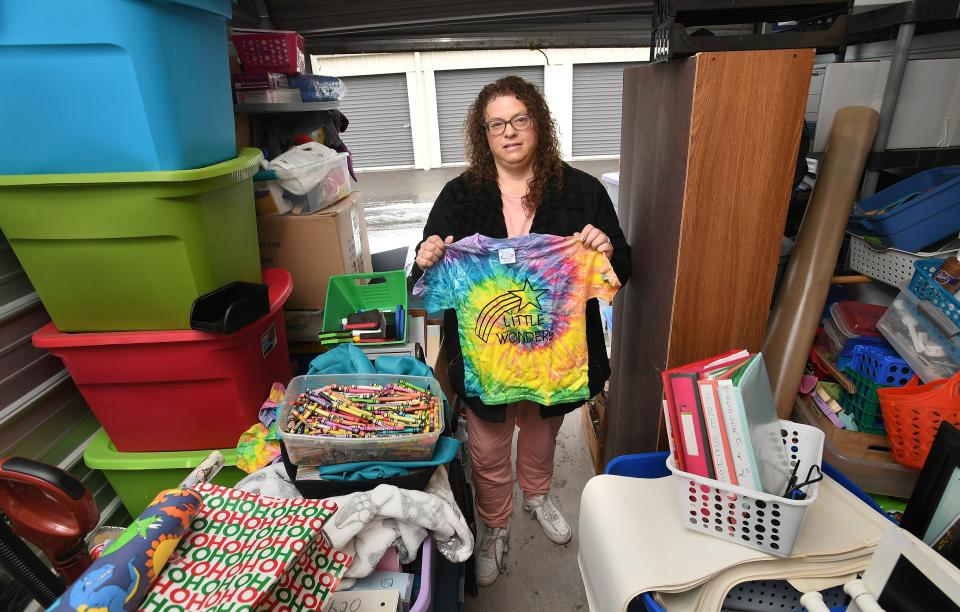Child care crisis tests providers, families and employers and demands lasting solutions
A team of unlikely allies came together in Erie this fall to make the case for a vital economic development tool. They did not pitch new grants, tax incentives or tech incubators but child care — affordable, expert and accessible.
We’ve long recognized early childhood learning — or the lack of it — can alter the trajectory of a child’s life.
The team in Erie — hospitality industry magnate Nick Scott Jr., child care professionals and the Erie Regional Chamber and Growth Partnership — argued that the care and instruction performed in child care settings extends far beyond the child’s horizons to undergird the economy in which their parents play a vital role.
“In 2021, child care is about economic development and a workforce that roars,” they wrote.
More: Nick Scott Jr.: Child care and economic development in Erie - it is time for action
It is a realization spreading across the country. The question now, even with Congressional Democrats' transformational child care policy and spending pending in the Build Back Better legislation, is whether the nation uses this moment of insight to fashion lasting child care solutions.
Disruptions in child care during the COVID-19 pandemic sent the economy into a tailspin, as the Erie team wrote.

Half of Pennsylvania employers lost employees due to a lack of child care. Another 57% of low-income working families reduced their work time or left jobs altogether due to child care problems, they said.
More: Erie Voices: Child care is economic development
Many blamed enhanced unemployment benefits for pandemic labor shortages. But the problem proved more complex than self-serving political talking points accounted for.
Many child care providers were forced to close by shutdown orders early on. Once reopened, they struggled to manage the added costs of safety measures at the same time enrollments dropped as parents opted to keep their kids home. Families had tough decisions to make as they balanced wages against the risk of COVID exposure. Women bowed out of the workforce by the millions, many to care for their children idled at home.
As businesses and schools reopened and women began to return to work, the child care sector could not staff centers to meet the demand.
As Spotlight PA reported, the ranks of child care workers dropped 8.5% between October 2019 and October 2021, from 48,100 to 44,000, according to preliminary data. A study by the Start Strong PA Campaign in the late summer found 92% of providers report staff shortages and that nearly 26,000 children are on waitlists for service.
Providers, in Spotlight coverage and in the Erie Times-News, described the struggle to attract and retain a workforce.
More: A closer look at Erie's child care 'crisis,' and how state officials, others are trying to fix it
That's because the pandemic did more than surface the role of child care in a functioning economy. It exposed to wider view the longstanding, untenable business model that has kept child care providers operating on razor-thin margins and too many parents straining to pay the bills for the child care they need in order to work. Costs for families who do not qualify for aid can top well over $10,000 a year at the same time some of those providing care earn low wages. The median pay for child care workers in Pennsylvania in 2019 was $10.69 an hour, Spotlight reported.
The government subsidizes care for some low-income families, but too often those payments do not actually cover the costs of the care. Providers can’t afford to pay competitive wages for labor, which is not menial but arguably one of the most important jobs a person can do — care for and educate a child in their earliest, formative years. School districts, convenience stores, fast food restaurants and more offer better compensation and benefits. So, providers face churn.
An unstable workforce translates into inconsistent services which then interfere with parents’ work schedules, not to mention their states of mind. Even before the pandemic, missed work and turnover triggered by child care challenges cost employers $2.8 billion in revenue and the state, $591 million in tax revenue, the U.S. Chamber of Commerce Foundation said.
Child care relief is flowing via more than $1 billion in federal funds Pennsylvania is deploying to boost subsidies for low-income families and offer one-time grants to providers. Even more money could flow with the passage of Build Back Better legislation pending in the Senate. It, among other things, seeks universal preschool for 3- and 4-year-olds and subsidies to raise providers' wages and ensure that working families don't pay more than 7% of their income on child care.
But those on the front lines say that funding, while welcome, is not a permanent fix. The federal legislation would expire in 2027 and depends on states to adopt key provisions.
This crisis offers leaders the chance to unite to craft meaningful, sustainable policy that reflects the value of this sector of our economy and family tranquility. Turning back the clock to a time when one parent’s income could support a family leaving another free to care for children at home is not an option. Some families have that luxury, but what employer could afford the pay increases to make that possible for most families?
Advocates have policy recommendations at the ready. In Erie, stakeholders are eying public private partnerships as one way to strengthen the sector.
It is time to see child care for what it is — an extension of the education system, our economy and our families — and support it accordingly.
This article originally appeared on Erie Times-News: Pennsylvania's child care crisis demands lasting solutions

